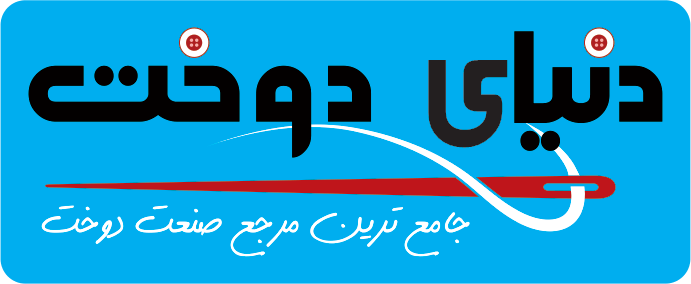Bookkeeping
What is a Flexible Budget? Advantages & Disadvantages
Instead, they have a massive amount of fixed overhead that does not vary in response to any type of activity. In this situation, there is no point in constructing a flexible budget, since it will not vary from a static budget. Flexible budgeting can be used to more easily update a budget for which revenue or other activity figures have not yet been finalized. Under this approach, managers give their approval for all fixed expenses, as well as variable expenses as a proportion of revenues or other activity measures. Then the budgeting staff completes the remainder of the budget, which flows through the formulas in the flexible budget and automatically alters expenditure levels. The flexible budget will show different possibilities for variable expenses and revenue.
Benefits of having a flexible budget for your small business
Consequently, a more sophisticated format will also incorporate changes to many additional expenses when certain larger revenue changes occur, thereby accounting for step costs. By incorporating these changes into the budget, a company will have a tool for comparing actual to budgeted performance at many levels of activity. A flexible budget is typically created by identifying the various costs and expenses that vary with changes in activity levels and calculating the expected cost or expense for each level of activity.
Variable costs can include marketing and sales, and may also include the cost of materials, number of sales, and shipping costs. For example, if your production of widgets is 100 per month, your variable admin costs may be $200 per month. However, if your production of widgets is 200 per month, your variable admin costs would increase to $400.
Advantages of Flexible Budgeting
Unlike a static budget, which can be prepared in anticipation of performance, a flexible budget allows you to adjust the original master budget using actual sales and/or production volume. In its simplest form, the flex budget uses percentages of revenue for certain expenses, rather than the usual fixed numbers. This allows for an infinite series of changes in budgeted expenses that are directly tied to actual revenue incurred. However, this approach ignores changes to other costs that do not change in accordance with small revenue variations.
A flexible budget often uses a percentage of your projected revenue to account for variable costs rather than assigning a hard numerical value to everything. This allows for budget adjustments to occur in real-time, taking into account external factors. Now let’s illustrate the flexible budget by using different levels of volume. If 5,000 machine hours were necessary for the month of January, the flexible budget for January will be $90,000 ($40,000 fixed + $10 x 5,000 MH). If the machine hours in February are 6,300 hours, then the flexible budget for February will be $103,000 ($40,000 fixed + $10 x 6,300 MH). If March has 4,100 machine hours, the flexible budget for March will be $81,000 ($40,000 fixed + $10 x 4,100 MH).
Consequently, the flex budget tends to include only a small number of step costs, as well as variable costs toxic asset wikipedia whose fixed cost components are not fully recognized. A flexible intermediate budget takes into account expenses that go beyond a company’s revenue. Revenue is constantly changing and is the most important factor in business decisions, but the intermediate flexible budget includes costs that vary based on other activity measures. The benefit of a flexible budget is that it provides a more accurate picture of a business’s performance by adjusting for changes in activity levels. This can help businesses make better decisions about their operations, identify areas where they can improve efficiency or reduce costs, and better plan for future growth. A flexible budget is one that takes into account your actual production and revenue rather than what you originally projected.
Flexible budgets work by taking the pressure off to predict future happenings. In the case of a typical business, if it is newly started, it becomes tough to predict the demand for the products/services accurately. We’re firm believers in the Golden Rule, which is why editorial opinions are ours alone and have not been previously reviewed, approved, or endorsed by included advertisers. The Ascent, a Motley Fool service, does not cover all offers on the market. For more budgeting tips, check out our articles on incremental budgeting and activity-based budgeting. As mentioned before, this model is a much more hands on and time consuming process requiring constant attention and recalibration.
- Under this approach, managers give their approval for all fixed expenses, as well as variable expenses as a proportion of revenues or other activity measures.
- Expenses such as rent, management salaries, and marketing costs remain static and do not change based on production.
- It begins with a static framework built from the costs that are not anticipated to change throughout the year.
- This comparison allows you to make any future adjustments based on the flexible budget variance indicated in the comparison.
- Once you have created your flexible budget, at the end of the accounting period you will want to compare the flexible budget totals against actuals.
Therefore it helps the management to accurately know about their productivity and output, for example, jute factories, handloom industries, etc. Using a flexible budget will immediately alert you to any changes that are likely to impact your bottom line, allowing you to make changes proactively instead of reactively. These points make the flexible budget an appealing model for the advanced budget user. However, before deciding to switch to the flexible budget, consider the following countervailing issues. Historically financial modeling has been hard, complicated, and inaccurate.
Why a Flexible Budget May Be a Good Option for Your Business
It begins with a static framework built from the costs that are not anticipated to change throughout the year. Layered on top of that is a flexible budget system allowing for variable costs to fluctuate based on sales performance. Let’s assume a company determines that its cost of electricity and supplies will vary by approximately $10 for each machine hour (MH) used. It also knows that other costs are fixed costs of approximately $40,000 per month. Typically, the machine hours are between 4,000 and 7,000 hours per month.
Revenue variance is the difference between what revenue should have been for the actual production activity and what the actual revenue you take in is. It may be favorable (higher than it should have been for actual production activity) or unfavorable (lower than it should have been). The advanced budget, on the contrary, takes into consideration the expected variations and ranges of differences in expenses to be incurred. This type of budget is open to changes based on the variations in the actual cost of the different categories of expenses. If you do find yourself in the market for accounting software for your small business, be sure to check out The Ascent’s accounting software reviews and find an application that is a good fit for your business needs.
Based on this information, the flexible budget for each month would be $40,000 + $10 per MH. Flexible budgets usually try to maintain the same percentages allotted for each aspect of a business, no matter how much the budget changes. So if the initial static budget called for 25% to be spent on marketing, the flexible budget will maintain that same percentage for marketing whether the budget increases or decreases. When preparing a flexible budget, managers are forced to consider the different scenarios and their responses to them. Thus, for a number of different situations, managers will have calculated their costs and revenues.
A flexible budget is much more realistic than fixed budget since it gives emphasis on cost behavior at different levels of activity. It’s versatile, adaptable, and can save your bacon when things get dicey. Whether you’re running a business or just trying to keep your personal finances in check, flexible budgeting can be a game-changer. This is the simplest form of a flexible budget, and it only alters those expenses that vary directly with revenue.
This represents your best guess at what will be spent and what will be earned. As you can see, the flexible budget adjusts the expected food expenses based on a higher cost per customer, resulting in an extra $1,500 in the overall budget. This allows the restaurant to better moving expenses manage its expenses and make informed decisions about future pricing and menu offerings, seizing the opportunity of the increase in customers to make a higher profit.
By aligning your expenses with your income, you can keep a closer eye on where your money’s going. This involves planning for different scenarios, updating forecasts, and being ready to adjust costs as needed. Datarails’ budgeting and forecasting software can help your team create and monitor different types ofbudgets faster and more accurately than ever before.

